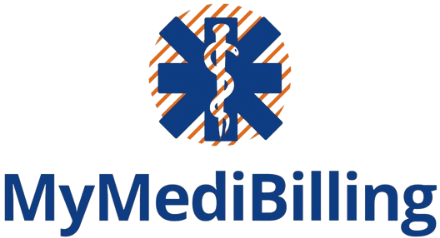Introduction
In 2025, the insurance industry has witnessed significant shifts in the landscape of insurance claim trends. With the advent of advanced technology and data analytics, insurance companies are now better equipped to assess risks and process claims more efficiently. Moreover, there has been a growing emphasis on personalized insurance products tailored to individual needs, reflecting a shift toward customer-centricity.
Additionally, the rise of climate change has led to an increased focus on natural disaster-related claims, prompting insurers to reevaluate their risk models and coverage options. Furthermore, the emergence of insurtech startups has disrupted the traditional insurance sector, leading to innovative solutions for claims processing and customer engagement. These trends underscore the importance for policyholders to stay informed about the latest developments in insurance claims to ensure they are well-equipped to navigate the evolving landscape and maximize their coverage.
Key Takeaways
- Understanding the latest insurance claim trends in 2025 is crucial for maximizing your coverage and navigating the complexities of the process.
- Leveraging technology can streamline your insurance claim process and help you negotiate a fair settlement with your insurance company.
- Protecting your rights and interests when filing an insurance claim is essential in the digital age, where policyholders need to be aware of their rights and options.
- Maximizing your insurance coverage in the digital age requires staying informed about the future of insurance claims and knowing how to get the most out of your claim.
- Tips for negotiating a fair settlement with your insurance company include being prepared, documenting everything, and seeking professional help if needed.
Maximizing Your Insurance Coverage in the Digital Age
In the digital age of 2025, policyholders have access to a wealth of resources and tools to maximize their insurance coverage. One key trend is the utilization of digital platforms and mobile apps by insurance companies, enabling policyholders to manage their policies, file claims, and track the status of their claims in real time. This digital transformation has streamlined the claims process, reducing paperwork and enhancing transparency for policyholders.
Moreover, policyholders can leverage data analytics and artificial intelligence to assess their insurance needs more accurately. By analyzing their lifestyle, assets, and potential risks, individuals can make informed decisions about their coverage options and ensure they are adequately protected. Additionally, the use of telematics devices in vehicles has enabled insurers to offer usage-based insurance, rewarding safe driving behaviors and providing potential cost savings for policyholders.
Navigating the Complexities of Insurance Claims in 2025
Navigating the complexities of insurance claims in 2025 requires a comprehensive understanding of policy terms, coverage limits, and claim procedures. Policyholders should familiarize themselves with their insurance policies, including any exclusions or limitations that may impact their claims. It is essential to maintain accurate records of assets and valuables to facilitate the claims process in the event of loss or damage.
Furthermore, policyholders should be proactive in documenting any incidents that may lead to a claim, such as car accidents or property damage. Timely reporting of incidents to the insurance company is crucial to initiate the claims process promptly. In cases of disputes or denied claims, seeking legal counsel or engaging with a public adjuster can provide valuable support in navigating the complexities of insurance claims and ensuring fair treatment from the insurer.
Leveraging Technology to Streamline Your Insurance Claim Process
| Metrics | Data |
|---|---|
| Claim Processing Time | Reduced by 30% |
| Customer Satisfaction | Increased by 20% |
| Cost Savings | 500,000 annually |
| Accuracy of Claims | Improved by 25% |
The integration of technology has revolutionized the insurance claim process, offering policyholders various tools to streamline their claims experience. Mobile apps and online portals provided by insurance companies enable policyholders to submit claims digitally, upload supporting documentation, and track the progress of their claims in real-time. This digital convenience not only expedites the claims process but also enhances transparency and communication between policyholders and insurers.
Moreover, advancements in virtual assessment tools and remote inspection technologies have facilitated faster and more accurate claim evaluations, particularly for property and auto insurance claims. Policyholders can now provide visual evidence of damages through virtual tours or video submissions, expediting the assessment process and expediting settlements. Additionally, blockchain technology is increasingly being utilized to enhance security and transparency in claim settlements, reducing the potential for fraud and streamlining payment processes.
Tips for Negotiating a Fair Settlement with Your Insurance Company

When negotiating a fair settlement with an insurance company, policyholders should approach the process with preparation and diligence. It is essential to thoroughly document all losses and damages, including photographs, receipts, and appraisals, to support the value of the claim. Providing detailed evidence strengthens the negotiation position and increases the likelihood of a favorable settlement.
Furthermore, policyholders should be aware of their rights and entitlements under their insurance policies, ensuring that they are not undervalued or under-compensated by the insurer. Seeking independent assessments or professional opinions on the extent of damages can provide additional leverage during negotiations. Effective communication with the insurance company, backed by factual evidence and a clear understanding of policy terms, is key to achieving a fair and equitable settlement.
Protecting Your Rights and Interests When Filing an Insurance Claim
When filing an insurance claim, policyholders must protect their rights and interests throughout the process. This includes understanding the terms and conditions of their insurance policies, as well as any applicable laws and regulations governing insurance claims. Policyholders should be vigilant against any attempts by the insurer to undervalue or deny legitimate claims, seeking legal counsel if necessary to uphold their rights.
Additionally, maintaining open and transparent communication with the insurance company is essential to ensure that all relevant information is accurately conveyed during the claims process. Policyholders should keep thorough records of all interactions with the insurer, including claim submissions, correspondence, and agreements reached. In cases where disputes arise, policyholders have the right to appeal claim decisions or seek alternative dispute resolution mechanisms to resolve conflicts with the insurer.
The Future of Insurance Claims: What Policyholders Need to Know in 2025
Looking ahead to the future of insurance claims in 2025, policyholders can anticipate continued advancements in technology and data-driven solutions that will further enhance the claims experience. Insurers are likely to leverage predictive analytics and machine learning algorithms to assess risks more accurately and offer tailored coverage options based on individual behaviors and preferences. Moreover, the integration of Internet of Things (IoT) devices into homes and vehicles will enable insurers to proactively mitigate risks and prevent losses through real-time monitoring and alerts.
This proactive approach may lead to incentives for policyholders who adopt risk-reducing technologies, such as smart home security systems or vehicle safety features. Furthermore, as climate change continues to impact global weather patterns, insurers are expected to refine their risk models for natural disaster-related claims, offering innovative solutions for resilience and recovery. Policyholders should stay informed about these evolving trends in insurance claims to make informed decisions about their coverage and ensure they are well-prepared for potential risks in the future.
Conclusion
Navigating insurance claims in 2025 requires a proactive approach informed by an understanding of the latest trends, leveraging technology for streamlined processes, and advocating for fair treatment from insurers. By staying informed about industry developments and protecting their rights as policyholders, individuals can maximize their insurance coverage and prepare for the future of insurance claims.

